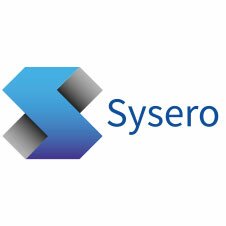Sysero: Debunking 5 common myths about legal workflow automation
As law firms adapt to new working practices, ever-evolving technology advancements, and an increasingly tech-savvy clientbase, many are turning to automation to help drive efficiency, profitability, and client service. In fact, according to the latest Briefing report, 56% of UK law firms say they are prioritising investment in process automation technologies to improve efficiency in workflows such as client intake and compliance.
Despite the significant increase in legal workflow automation adoption in recent years, there are still many legal leaders who have hesitations and doubts about bringing workflow automation to their firms. While leading law firms like Wedlake Belland Castrén & Snellman are tapping into the benefits of workflow automation to streamline working practices and service delivery, others are missing out on the opportunity to unlock the benefits of workflow automation due to commonly held misconceptions.
That’s why we’re taking this opportunity to debunk some of the most common myths about legal workflow automation.
Myth 1: Workflow automation requires a lot of time and training
By their very nature, law firms deal with highly complex processes as part of everyday business – whether it’s onboarding new clients, conducting compliance checks, generating bundles of documents, or negotiating contracts. The benefit of workflow automation is that it simplifies these complex processes, while also making it easy for lawyers to build their own processes.
While it’s true that some workflow automation tools can be difficult to learn, other tools like Sysero are designed to fit with the way that lawyers are accustomed to working. For example, using Sysero’s workflow automation tools, lawyers can easily automate documents within Microsoft Word and build their own workflows via an intuitive visual workflow designer.
Low-code/no-code platforms like Sysero allow lawyers to create their own applications and workflows using an easy-to-use visual interface and drag-and-drop functionality. Essentially, with a low-code/no-code solution, lawyers can create custom automated workflows, without any technical knowledge and limited support.
Myth #2: Workflow automation and AI are the same
Although many in the legal sector use the terms “workflow automation” and “AI” interchangeably, they are in fact entirely different concepts.
Workflow automation optimises processes by replacing manual tasks with technology that performs all or part of a process. It’s essentially a set of logic designed to complete repetitive tasks and processes at high speed with efficiency.
AI, on the other hand, is an advanced technology that entirely replaces the need for a lawyer by replicating their own capabilities. It’s used to predict and perform high-end functions and help users make use of massive data for business decisions.
In the legal space, workflow automation offers a modern-day solution to solving law firm’s biggest challenges – such as streamlining client intake, conducting KYC checks, and producing large amounts of transactional documents. While AI promises an all-encompassing solution that’s decades away.
Myth #3: Workflow automation will solve all of your problems
Many firms believe that once they implement a workflow automation solution, all of their problems will magically disappear. However, just like any other technology initiative, workflow automation requires proper planning, implementation and management.
Workflow automation can deliver an array of benefits for the modern firm, however, it’s only as good as the processes it supports. It’s absolutely crucial to design your firm’s processes before implementing a workflow automation solution. Furthermore, adoption depends on the lawyers and staff using the solution, so it’s imperative to opt for a technology platform that’s easy-to-use and intuitive.
Myth #4: Workflow automation isn’t secure
Most workflow automation tools live in the cloud, making them accessible to lawyers, staff and clients wherever they may be working. However, some legal IT leaders may feel that this puts their internal data at risk by exposing it to external servers.
However, modern-day workflow automation solutions like Sysero allow firms to take advantage of the flexibility of cloud, as well as the enhanced security of an on-premise solution. Sysero’s hybrid workflow solution combines a cloud-based system with an in-house Sysero server to enable firms to host workflows that allow external parties (such as clients) to participate in workflows, whilst storing data in-house.
Furthermore, workflow automation solutions like Sysero come with built-in enterprise grade security protocols, such as pseudonymisation and encryption, to keep internal data protected.
Myth #5: Workflow automation is a one-time project
Legal processes are always evolving, and so too should your workflow automation technology. Workflow automation is designed to continually evolve with the needs and requirements of your firm.
Solutions like Sysero’s low-code platform make it easy for firms to customise workflow applications as needed to address new and arising challenges. Additionally, as your workforce scales, you can easily scale your workflow automation solution with Sysero’s clear, per-user licence agreement. Want to add more workflows as part of your Sysero system? It’s all included to make it easier for your firm to take advantage of the benefits of workflow automation.
Still having doubts about making the move to workflow automation? Get in touch with our team for a demo on how it can benefit your firm.



